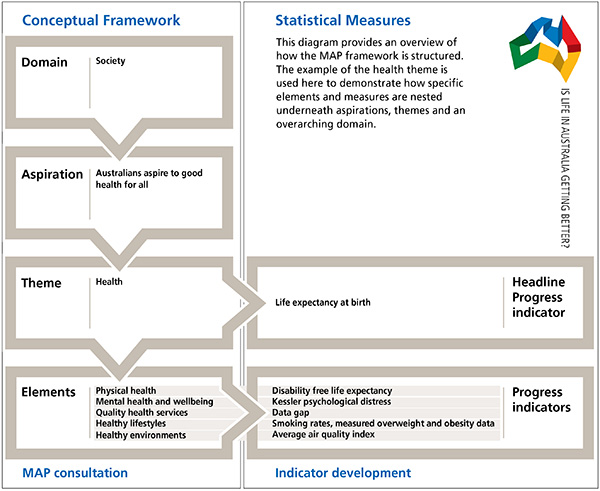STRUCTURE OF THE FRAMEWORK
The refreshed MAP framework has been structured in the following way:
- Domains – The overarching areas of interest (i.e. Society, Economy and Environment) that have been used as an organising principle in MAP since its inception to guide and organise the consultation process (note, there will be a fourth domain of Governance in MAP 2013). Each theme, aspiration, element and progress indicator falls into one of these broad domains.
- Themes – They summarise the aspirations that Australians thought were important for national progress and will, where possible, be represented by a headline progress indicator. These headline indicators will appear on the MAP Dashboard. Within each theme, elements exist for more specific areas of progress.
- Elements – Are important areas of the aspirations that Australians wanted to see process in. They are descriptive and conceptual, pointing towards progress measures for the aspirations. Elements will be represented by a progress indicator where an appropriate measure is available.
- Contextual Information – Provided where appropriate, particularly in the case where a progress indicator is not available for either the theme or elements.
Displayed below is a diagram that describes the structure of the MAP framework. Figure 2 displays the nested relationship between domains, themes, elements and the measures as described above. A detailed description of the MAP framework structure is available in
Appendix C.
 Figure 2:
Figure 2: Structure of MAP framework.
 Print Page
Print Page
 Print All
Print All